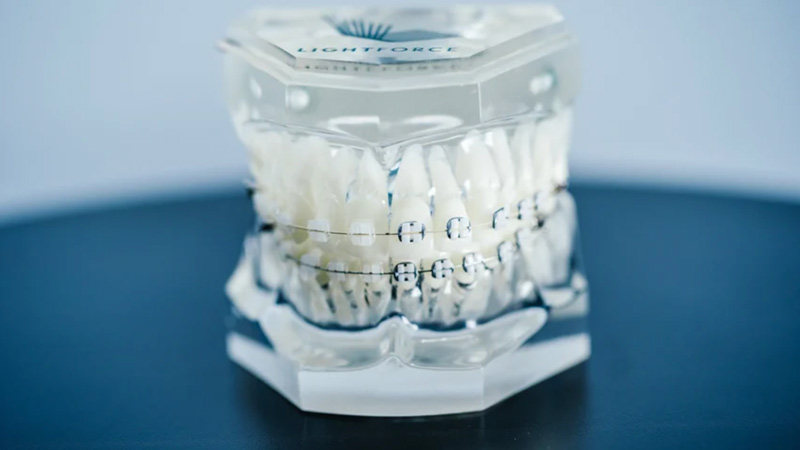Comprehensive Guide to Orthodontics Procedures for Remedying Oral Misalignments
Recognizing the details of each treatment, including their devices, advantages, and possible downsides, is vital in making informed choices concerning one's orthodontic therapy. As we browse through the detailed guide to orthodontic procedures for fixing dental misalignments, the intricate information of each approach will unfold, dropping light on the path towards a practical and harmonious oral placement.
Orthodontic Procedures Review

Regular modifications and monitoring are critical components of orthodontic therapy to make certain development is on track and to make any type of necessary modifications along the means. By undergoing orthodontic procedures, clients can not just accomplish a straighter grin yet additionally boost their total dental wellness and function.
Conventional Braces: How They Work
When considering orthodontic therapies for oral misalignments, traditional dental braces stick out as a time-tested approach for dealing with teeth placing. Traditional dental braces contain braces, cables, and bands that collaborate to use constant stress on the teeth, progressively moving them right into the preferred alignment. The brackets are affixed to the teeth utilizing an unique adhesive, and the cables are threaded through the brackets. By changing the tension of the wires, orthodontists can manage the direction and pressure related to each tooth, directing them right into appropriate alignment gradually.
One trick aspect of how standard dental braces work is the process of bone renovation. As stress is used to the teeth through the dental braces, the bone bordering the teeth is improved to support the new tooth placements. This remodeling is necessary for the lasting security of the fixed positioning. People will certainly require normal adjustments at the orthodontist's office to make sure the dental braces remain to use the correct pressure for efficient teeth activity.
Unnoticeable Aligners: Pros and Cons
Unnoticeable aligners supply a convenient and very discreet option to conventional dental braces for fixing dental imbalances. These clear, customized trays are practically unnoticeable when put on, making them an appealing alternative for people seeking a more aesthetically pleasing orthodontic therapy. Among the key benefits of unnoticeable aligners is their removability, enabling for simpler maintenance of dental health contrasted to typical dental braces. Clients can remove the aligners prior to eating or cleaning their teeth, decreasing the risk of food obtaining embeded the appliance and streamlining the cleaning procedure.

Surgical Orthodontic Options
Surgical treatments in orthodontics existing sensible options for dealing with complex dental misalignments that might not be effectively dealt with with traditional orthodontic treatments. While standard dental braces and undetectable aligners can fix several cosmetic dentistry veneers orthodontic concerns, particular situations need surgical intervention to achieve ideal results. Surgical orthodontic choices are typically suggested for extreme malocclusions, considerable jaw discrepancies, and instances where the underlying bone structure requires adjustment to achieve proper positioning.
One typical surgical orthodontic procedure is orthognathic surgery, which entails rearranging the jaws to fix useful concerns such as problem talking or chewing. This surgery is often executed in partnership with an orthodontist who aids align the teeth before and after the procedure. Surgical orthodontics might also entail procedures to reveal affected teeth, remove excess periodontal tissue, or improve the jawbone to produce a more unified face profile.
Before considering medical orthodontic choices, clients undertake a comprehensive assessment to figure out the necessity and prospective benefits of such interventions. orthodontist. While surgical procedure may appear complicated, it can considerably boost both the function and visual appeals of the smile in situations where standard orthodontic treatments fall short
Retainers and Post-Treatment Treatment

Failure to conform with post-treatment care directions can result in relapse, where the teeth slowly move back towards their original positions. Constant retainer wear, great dental hygiene, and regular dental check-ups are important for maintaining the results achieved through orthodontic surgical procedure and making sure the long-term stability of the fixed dental placement.
Verdict
In verdict, orthodontic procedures offer various alternatives moved here for fixing oral misalignments. Surgical orthodontic alternatives are available for a lot more severe imbalances. Overall, orthodontic procedures can effectively enhance oral health and visual look.
As we navigate with the comprehensive guide to cosmetic dental bonding orthodontic procedures for dealing with dental imbalances, the intricate details of each approach will unfold, losing light on the course towards a harmonious and useful oral placement. - invisalign
One of the most usual orthodontic therapies is the usage of braces, which consist of steel braces and cords that apply gentle stress to progressively shift teeth right into the desired setting.When taking into consideration orthodontic therapies for dental misalignments, standard dental braces stand out as a time-tested method for correcting teeth positioning. In addition, invisible aligners may not be appropriate for complicated orthodontic concerns that require more considerable teeth motion, as they are commonly recommended for moderate to moderate situations. Retainers are personalized orthodontic devices designed to hold teeth in their corrected positions after the completion of orthodontic therapy.
Comments on “The Advantages of Picking a Cumming Orthodontist for Your Braces and Aligners”